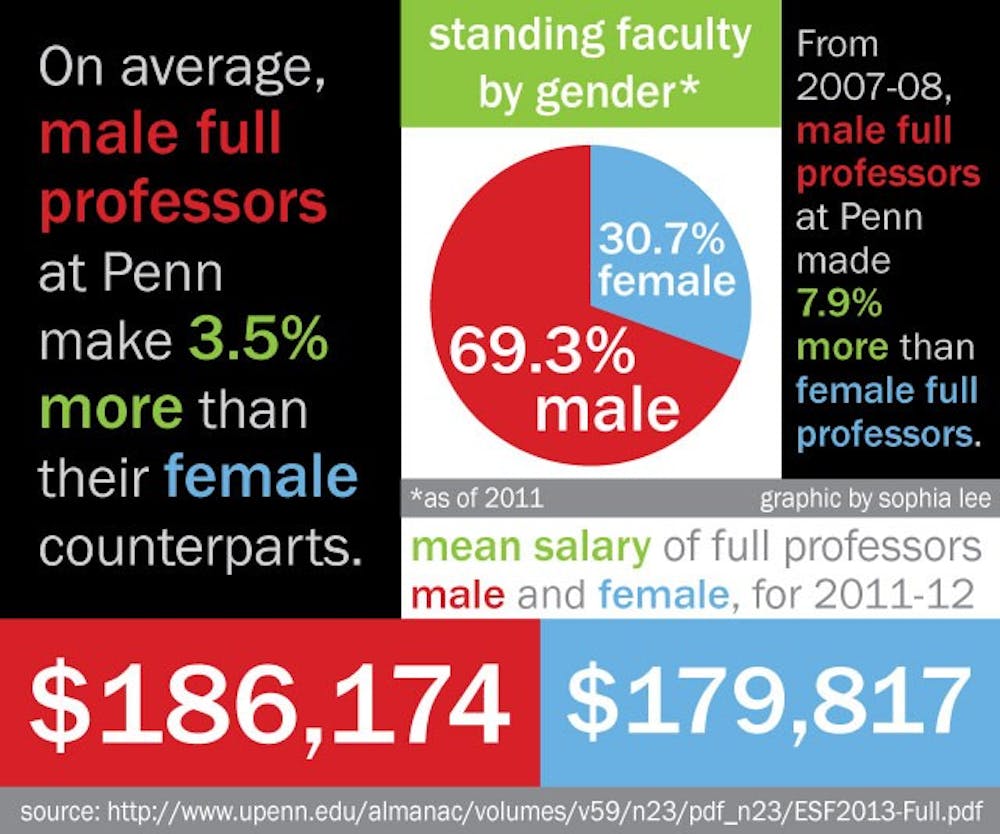
Women are being paid less than men for working the same jobs at Penn — and although the gap has been decreasing over the past decade, discernable disparity remains for most positions.
On Monday at the White House Summit on Working Families, former University President and current President of the Rockefeller Foundation Judith Rodin shed light on this issue after asked if women always know and communicate their value.
“When I was offered the Presidency of Penn...I think the board believed that I would and should feel extremely grateful,” Rodin said. “They offered me a salary and I went home overnight and started to get really angry.”
Rodin added that she went back to the Board of Trustees the next day before accepting the offer in 1994 and asked them, “Would you have offered me that [salary] if I were a man?”
“They stopped--to their credit--and paused and raised my salary significantly in the next 10 minutes,” Rodin said, to applause.
Rodin went on to top the chart of highest paid sitting University Presidents in the 1997-98 fiscal year, The Daily Pennsylvanian reported.
Rising College sophomore and Communications Director of Penn Democrats Max Levy attended the event as an intern for the Center for American Progress, which cohosted the event along with the White House and the Department of Labor.
“I was disappointed to hear that Penn had initially offered her a lower salary. I usually think of Penn as a forward thinking institution and was surprised to hear of an example of pay inequality at my home school,” Levy said in an email.
The 2011-12 Annual Report from the Faculty Senate Committee on the Economic Status of the Faculty reveals that Rodin’s wage encounter has remained an issue over the past 20 years.
For the purpose of removing as many confounding variables as possible, the numbers addressed in the report are weighted for the number of continuing faculty member at each rank in each of Penn’s schools and are taken from the 2011-12 fiscal year.
The report’s statistics show that although female faculty members have historically made less than their male counterparts, the disparity appears to be trending downward.
Full male professors make, on average, 3.5 percent more than full female professors, down from 7.9 percent in 2007-08 . Associate male professors make an average of 0.8 percent more than associate female professors, down from 4.3 percent in 2007-08 .
Yet assistant male professors currently make 3.5 percent more than assistant female professors, a 2.7 percent increase from the 2010-11 fiscal year. In their report, the Faculty Senate Committee labeled this increase a “perplexing” number.
At the Summit, Rodin acknowledged that speaking up and addressing situations of gender inequality is often difficult.
“I think often, and it will matter by the culture of that company or organization, if...[the] culture [is] suppressing, then women are more reluctant to put their hands up...and ask for things,” Rodin said.
Penn’s most recent Progress Report of Gender Equity, which was released in 2013, states that, as with peer institutions, women are more heavily represented in the junior faculty ranks. Yet, the report notes that there have been “steady increases in the proportion of women in every faculty rank.”
The report further illustrates how over the past decade, the proportion of women on Penn’s standing faculty has increased to 30.7 percent in 2011, a 2.3 percent increase from the 28.4 percent of female standing faculty in 2007.
“I think it’s going to take a cultural shift, not legislation, to achieve pay equity in this country,” Levy said. “It’s going to take more women like Judith Rodin speaking out and stepping up before equal work leads to equal pay wherever you go.”
The Daily Pennsylvanian is an independent, student-run newspaper. Please consider making a donation to support the coverage that shapes the University. Your generosity ensures a future of strong journalism at Penn.
DonatePlease note All comments are eligible for publication in The Daily Pennsylvanian.





